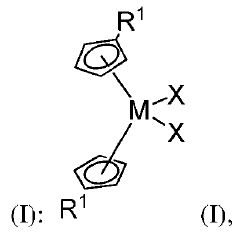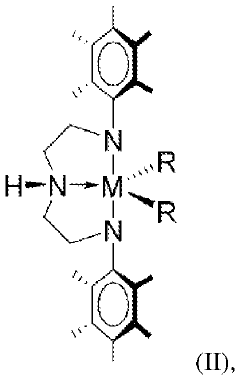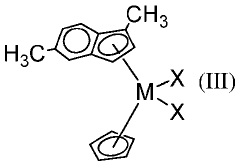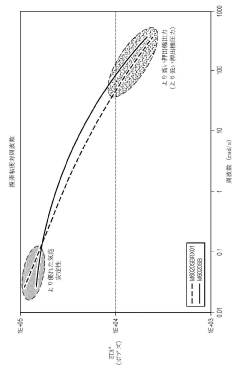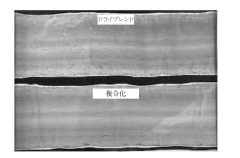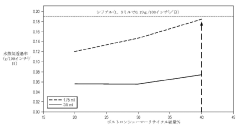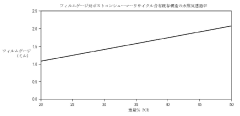Breakthroughs in HDPE Blending Technologies
HDPE Blending Evolution
The evolution of HDPE blending technologies has been marked by significant advancements over the past few decades. Initially, HDPE blending was primarily focused on simple mechanical mixing of different grades to achieve desired properties. However, as the demand for more sophisticated materials grew, so did the complexity of blending techniques.
In the 1980s, the introduction of twin-screw extruders revolutionized HDPE blending. These machines allowed for better dispersion and distribution of additives and modifiers, leading to more homogeneous blends with improved mechanical properties. This breakthrough enabled the production of HDPE composites with enhanced strength, impact resistance, and processability.
The 1990s saw the emergence of reactive extrusion techniques. This innovation allowed for chemical modifications to occur during the blending process, opening up new possibilities for tailoring HDPE properties. Compatibilizers and coupling agents could be added in-situ, resulting in better interfacial adhesion between HDPE and other polymers or fillers.
The turn of the millennium brought about advancements in nano-blending technologies. The incorporation of nanoparticles, such as carbon nanotubes and nanoclays, into HDPE matrices became feasible, leading to nanocomposites with exceptional mechanical and barrier properties. This development expanded the application range of HDPE blends into high-performance sectors.
In recent years, the focus has shifted towards sustainable blending solutions. Bio-based additives and recycled HDPE have been increasingly incorporated into blends, addressing environmental concerns while maintaining or even improving material performance. Advanced sorting and purification technologies have played a crucial role in enabling the use of recycled content in high-quality HDPE blends.
The latest frontier in HDPE blending involves the integration of smart materials and functionalities. Conductive fillers, phase-change materials, and self-healing additives are being explored to create HDPE blends with responsive and adaptive properties. These innovations are paving the way for HDPE applications in emerging fields such as flexible electronics and smart packaging.
Throughout this evolution, computational modeling and simulation tools have become increasingly sophisticated, allowing for more accurate prediction of blend properties and optimization of blending parameters. This has significantly reduced development time and costs, enabling rapid innovation in HDPE blend formulations.
Market Demand Analysis
The market demand for HDPE blending technologies has been steadily increasing due to the growing need for high-performance plastics in various industries. HDPE blends offer enhanced properties such as improved impact resistance, chemical resistance, and processability, making them attractive for applications in packaging, automotive, construction, and consumer goods sectors.
In the packaging industry, there is a significant demand for HDPE blends that can provide better barrier properties and durability while maintaining recyclability. This is driven by the global push towards sustainable packaging solutions and the need to reduce plastic waste. The food and beverage sector, in particular, is seeking HDPE blends that can extend shelf life and improve product protection.
The automotive industry is another key driver of market demand for HDPE blending technologies. As vehicle manufacturers strive to reduce weight and improve fuel efficiency, there is a growing interest in HDPE blends that can replace heavier materials while maintaining strength and durability. These blends are being used in various automotive components, including fuel tanks, interior trim, and under-the-hood applications.
In the construction sector, HDPE blends are gaining traction for their ability to withstand harsh environmental conditions and provide long-term performance. There is a rising demand for HDPE blends in applications such as pipes, fittings, and geomembranes, where resistance to chemicals, UV radiation, and temperature fluctuations is crucial.
The consumer goods industry is also contributing to the market demand for HDPE blending technologies. Manufacturers are seeking materials that can offer improved aesthetics, durability, and functionality for products ranging from household items to electronics casings. HDPE blends that can incorporate additives for specific properties, such as antimicrobial or flame-retardant characteristics, are particularly in demand.
Geographically, the Asia-Pacific region is expected to be a major growth driver for HDPE blending technologies, fueled by rapid industrialization and urbanization in countries like China and India. North America and Europe are also significant markets, with a focus on developing sustainable and high-performance HDPE blends.
The market for HDPE blending technologies is further influenced by regulatory trends, particularly those related to environmental sustainability and recycling. There is a growing demand for HDPE blends that can incorporate recycled content without compromising performance, aligning with circular economy principles and extended producer responsibility regulations.
As the industry evolves, there is an increasing emphasis on developing HDPE blends that can meet specific performance requirements while addressing sustainability concerns. This has led to a rise in collaborative efforts between material suppliers, technology providers, and end-users to create tailored HDPE blending solutions that can address complex market needs and drive innovation across multiple sectors.
Technical Challenges
High-density polyethylene (HDPE) blending technologies have made significant strides in recent years, yet several technical challenges persist. These challenges primarily stem from the complex nature of polymer blending and the diverse requirements of end-use applications.
One of the foremost challenges in HDPE blending is achieving optimal dispersion and compatibility between different polymer components. The inherent immiscibility of many polymer pairs often results in phase separation, leading to poor mechanical properties and inconsistent performance. Overcoming this challenge requires advanced compatibilization techniques and precise control over processing conditions.
Another significant hurdle is maintaining the desired balance of properties in the final blend. HDPE blends are often created to enhance specific characteristics such as impact strength, chemical resistance, or processability. However, improving one property frequently comes at the expense of others. Engineers must navigate this delicate trade-off to develop blends that meet the multifaceted requirements of modern applications.
The processing of HDPE blends presents its own set of challenges. High melt viscosity and thermal sensitivity of certain blend components can lead to processing difficulties, including inconsistent melt flow, degradation, and poor surface finish. Developing robust processing methods that can handle a wide range of blend compositions without compromising product quality remains an ongoing challenge.
Achieving consistent quality across large production volumes is another critical issue. Variations in raw material properties, processing conditions, and environmental factors can lead to batch-to-batch inconsistencies. Implementing effective quality control measures and developing predictive models for blend behavior are essential for overcoming this challenge.
The environmental impact of HDPE blends is an increasingly important consideration. Developing blends that maintain recyclability and biodegradability without sacrificing performance is a complex challenge. This includes addressing issues such as the separation of blend components during recycling and ensuring the long-term stability of biodegradable additives.
Lastly, the scalability of new blending technologies from laboratory to industrial production presents significant technical hurdles. Many promising blend formulations and processing techniques that show potential at small scales face difficulties in large-scale implementation. Overcoming these scaling challenges requires a deep understanding of process engineering and material behavior under industrial conditions.
Addressing these technical challenges in HDPE blending technologies requires a multidisciplinary approach, combining advances in polymer science, process engineering, and materials characterization. As research progresses, new solutions are emerging, paving the way for the next generation of high-performance HDPE blends.
Current Blending Methods
01 Blending HDPE with other polymers
HDPE can be blended with other polymers to enhance its properties. This technique involves mixing HDPE with materials such as LDPE, LLDPE, or other compatible polymers to create a composite material with improved characteristics. The blending process can be optimized to achieve desired mechanical, thermal, and chemical properties.- Blending HDPE with other polymers: HDPE can be blended with other polymers to enhance its properties. This technique involves mixing HDPE with materials such as LDPE, LLDPE, or other compatible polymers to create a composite material with improved characteristics. The blending process can be optimized to achieve desired mechanical, thermal, and chemical properties for specific applications.
- Incorporation of additives in HDPE blends: Various additives can be incorporated into HDPE blends to enhance specific properties. These additives may include antioxidants, UV stabilizers, flame retardants, or reinforcing agents. The selection and proportion of additives are crucial in tailoring the final product's performance to meet specific requirements in different industries.
- HDPE blending for recycling and sustainability: HDPE blending technologies are being developed to improve the recyclability and sustainability of plastic products. This involves techniques for blending recycled HDPE with virgin material or other recycled plastics to create new products with acceptable properties. The focus is on maintaining or enhancing the quality of recycled HDPE through innovative blending processes.
- Advanced processing techniques for HDPE blends: Novel processing techniques are being explored to improve the efficiency and quality of HDPE blending. These may include reactive extrusion, in-situ compatibilization, or advanced mixing technologies. The aim is to achieve better dispersion of components, enhanced interfacial adhesion, and improved overall performance of the blended materials.
- HDPE blending for specific applications: HDPE blending technologies are being tailored for specific end-use applications. This involves developing specialized blends for industries such as packaging, automotive, construction, or medical devices. The blending process is optimized to meet the unique requirements of each application, such as improved barrier properties, enhanced durability, or specific regulatory compliance.
02 Incorporation of additives in HDPE blends
Various additives can be incorporated into HDPE blends to enhance specific properties. These additives may include antioxidants, UV stabilizers, flame retardants, or reinforcing agents. The selection and proportion of additives are crucial in achieving the desired performance characteristics of the final HDPE blend.Expand Specific Solutions03 HDPE blending for recycling applications
HDPE blending technologies are utilized in recycling processes to improve the quality and properties of recycled HDPE. This involves mixing recycled HDPE with virgin HDPE or other compatible materials to enhance the mechanical and physical properties of the recycled product, making it suitable for various applications.Expand Specific Solutions04 Reactive blending of HDPE
Reactive blending techniques involve the use of chemical reactions during the blending process to modify the properties of HDPE. This may include grafting, crosslinking, or compatibilization reactions. Reactive blending can lead to improved compatibility between HDPE and other polymers or enhance specific properties of the blend.Expand Specific Solutions05 HDPE blending for specific applications
HDPE blending technologies are tailored for specific applications such as packaging, automotive parts, or construction materials. The blending process is optimized to meet the requirements of each application, considering factors like strength, durability, chemical resistance, and processability.Expand Specific Solutions
Key Industry Players
The HDPE blending technologies market is in a mature growth phase, characterized by ongoing innovation and competition among major players. The global market size for HDPE is substantial, driven by increasing demand in various industries. Technological maturity varies, with established companies like Dow Global Technologies LLC, ExxonMobil Chemical Patents, Inc., and SABIC Global Technologies BV leading in advanced blending techniques. Emerging players such as Braskem SA and NOVA Chemicals Corp. are also making significant strides. The competitive landscape is further shaped by regional powerhouses like China Petroleum & Chemical Corp. and PetroChina Co., Ltd., who are investing heavily in R&D to enhance their market positions. Overall, the field remains dynamic, with continuous efforts to improve product performance and sustainability.
Dow Global Technologies LLC
ExxonMobil Chemical Patents, Inc.
Innovative Techniques
- A blend of 25 to 90 weight percent recycled HDPE with 10 to 75 weight percent virgin bimodal HDPE, having specific density and flow index ranges, is used to achieve a balance of rigidity and environmental stress crack resistance for blow-molded parts.
- A method involving high shear melt mixing of virgin HDPE with low melt index and post-consumer recycled HDPE in a twin-screw extruder to create a composite polymer with a melt index of 1 to 4 g/10 min, a molecular weight distribution of at least 4, and improved processability, suitable for food packaging.
Environmental Impact
The environmental impact of HDPE blending technologies has become increasingly significant as the plastics industry seeks more sustainable solutions. Recent breakthroughs in HDPE blending have led to notable improvements in reducing the environmental footprint of plastic production and usage.
One key advancement is the development of more efficient blending processes that require less energy input. These new technologies optimize the mixing of HDPE with other materials, resulting in reduced energy consumption during production. This not only lowers greenhouse gas emissions but also contributes to overall cost savings for manufacturers.
Another important breakthrough is the incorporation of recycled HDPE into blending processes. Advanced sorting and cleaning technologies have enabled the use of post-consumer HDPE in blends without compromising product quality. This circular approach significantly reduces the demand for virgin plastic production, thereby conserving natural resources and minimizing waste.
Innovations in additive technologies have also played a crucial role in enhancing the environmental profile of HDPE blends. New additives have been developed that improve the biodegradability of HDPE products without sacrificing their durability during use. These additives can accelerate the decomposition process once the product enters the waste stream, reducing long-term environmental impact.
Furthermore, breakthroughs in HDPE blending have led to the creation of lighter-weight materials with improved strength-to-weight ratios. This has significant implications for transportation and packaging industries, as lighter products require less fuel for transport, thereby reducing carbon emissions throughout the supply chain.
The development of HDPE blends with enhanced barrier properties has also contributed to environmental sustainability. These advanced blends can extend the shelf life of perishable goods, reducing food waste and the associated environmental burden of production and disposal.
Lastly, recent advancements in HDPE blending technologies have focused on improving the recyclability of end products. By carefully selecting compatible materials and optimizing blend compositions, researchers have created HDPE blends that are easier to recycle at the end of their lifecycle. This breakthrough facilitates the transition towards a more circular economy in the plastics industry.
Regulatory Compliance
Regulatory compliance plays a crucial role in the development and implementation of HDPE blending technologies. As breakthroughs in this field continue to emerge, manufacturers and researchers must navigate an increasingly complex landscape of regulations and standards to ensure their innovations meet legal requirements and industry best practices.
In the United States, the Food and Drug Administration (FDA) oversees the use of HDPE in food contact applications. The agency's regulations, particularly 21 CFR 177.1520, outline specific requirements for the composition, processing, and testing of HDPE materials intended for food contact. Manufacturers must demonstrate compliance with these regulations through extensive testing and documentation to obtain FDA approval for their blended HDPE products.
The European Union's regulatory framework for HDPE blends is governed by the European Food Safety Authority (EFSA) and the European Chemicals Agency (ECHA). The EU's REACH (Registration, Evaluation, Authorization, and Restriction of Chemicals) regulation requires manufacturers to register and assess the safety of chemical substances used in HDPE blending processes. Additionally, the EU Plastics Regulation (EU) No 10/2011 sets specific migration limits for substances used in plastic food contact materials, including HDPE blends.
Environmental regulations also significantly impact HDPE blending technologies. Many countries have implemented or are in the process of implementing regulations aimed at reducing plastic waste and promoting recycling. These regulations often include requirements for the use of recycled content in plastic products, which directly affects HDPE blending processes. For instance, the EU's Single-Use Plastics Directive mandates increased use of recycled content in plastic packaging, driving innovation in HDPE blending technologies to incorporate more recycled materials while maintaining product performance.
Safety standards for HDPE blends used in critical applications, such as pressure pipes or automotive components, are governed by various international and regional bodies. The International Organization for Standardization (ISO) provides guidelines for testing and quality control of HDPE materials, while regional standards organizations like ASTM International in the United States and the European Committee for Standardization (CEN) offer specific standards for HDPE blends in different applications.
As breakthroughs in HDPE blending technologies continue to push the boundaries of material performance and sustainability, regulatory bodies are likely to adapt their frameworks to address new challenges and opportunities. This may include the development of new testing methodologies, updated safety assessments for novel additives or blending processes, and evolving requirements for environmental impact and recyclability.
Manufacturers and researchers working on HDPE blending technologies must maintain a proactive approach to regulatory compliance, staying informed about evolving regulations and actively engaging with regulatory bodies to ensure their innovations align with current and future requirements. This ongoing dialogue between industry and regulators is essential for fostering innovation while safeguarding public health, safety, and environmental protection.
